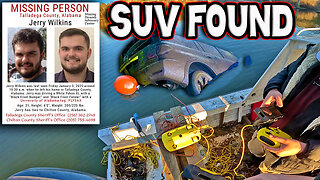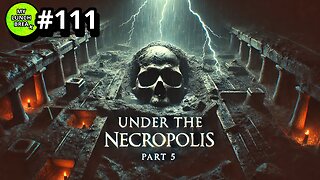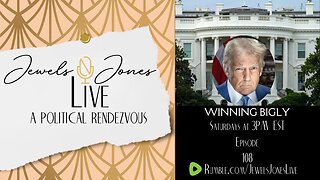Premium Only Content

THROSBY DRIVE AND KEIRA STREET!🎶 With free music in the background.🎶
Throsby Drive was named after Throsby, Charles (1777–1828) surgeon, settler and explorer, was born at Glenfield, near Leicester, England, the younger son of John Throsby, historian and antiquarian.
He joined the navy as a surgeon and served in the armed transports Coromandel and Calcutta from 1797 until the peace. In June 1802 he arrived in New South Wales as naval surgeon of the Coromandel and was complimented by Governor Philip Gidley King on the good health of the convicts and settlers under his charge. While in Port Jackson Throsby was engaged by James Thomson to do his duty while he took a year's leave; in October Throsby was appointed medical officer and magistrate at Castle Hill. In January 1804 he was moved to Sydney; in March he applied for a permanent position in the medical service of the colony, and in August he was sent to Newcastle as assistant surgeon. In March 1805 when lieutenant Charles Menzies, the commandant, resigned, Throsby was appointed superintendent of labour; but next month when Ensign Draffen, who relieved Menzies, became insane, Throsby was given command of the settlement which, according to Governor King, he conducted with 'great Activity and Propriety'. In 1808 he was confirmed as magistrate by the rebel administration, but returned to Sydney in December and next September resigned as surgeon on the grounds of ill health. Lieutenant-Governor William Paterson allowed him to retire 'with the indulgence of a free settler', and to exchange his sheep and cattle at Newcastle for an equivalent number at Sydney. In 1808 Lieutenant-Governor Joseph Foveaux had granted Throsby 500 acres (202 ha) at Cabramatta for his services at Newcastle and in 1809 Paterson made him grants of 500 (202 ha) and 100 acres (40 ha) at Minto. These he had to surrender in 1810, but Governor Lachlan Macquarie granted him 1500 acres (607 ha) in their place, and confirmed the cattle exchange. He built Glenfield, named after his birthplace, at Upper Minto and for the next few years concentrated there on pastoral activities.
In 1817 Macquarie noted Throsby as one of those colonists who were discontented, but he was later reconciled with the governor, probably as a result of his achievements as an explorer, which Macquarie rated highly. Throsby was one of the first settlers in the Illawarra district, where in November 1816 his stockmen already had a hut, and he was also one of the first to settle in the Moss Vale district. In August 1817 he explored the country west of Sutton Forest with Hamilton Hume, a family friend. In March and April 1818 he accompanied Surveyor-General James Meehan on a journey from the Cowpastures through Moss Vale to Bundanoon Creek and south-east to Jervis Bay; after the party divided Throsby reached the Shoalhaven River and Jervis Bay. In April 1819 he made a tour from the Cowpastures to Bathurst, opening up fertile country which Macquarie felt would meet the increase of settlers for many years; for this he granted Throsby 1000 acres (405 ha), and also rewarded his companions and servants. In 1819 Throsby discovered a pass between the Illawarra and Robertson districts and successfully drove a herd of cattle through it. In March 1820 he explored the country around Goulburn and Lake Bathurst and penetrated as far as the Breadalbane Plains. Macquarie gave him superintendence over the building of the road from the Cowpastures to the new country, which was placed under the direction of Throsby's servant Joseph Wild. In 1820 Macquarie visited the work party, which had reached the Cookbundoon Range, and gave Throsby's estate in the new country the name of Throsby Park.
Throsby's return to Macquarie's favour was not easy, for Meehan disagreed with Throsby over the usefulness of the new country and Macquarie was first bound to accept Meehan's judgment; but in time Macquarie came to speak as glowingly of the disputed country as Throsby himself. In a letter to Meehan in 1820 Throsby spoke of his pride in having partly caused the disagreement, for he felt that the dispute would inspire others to inquire into the country's usefulness more fully. By 1820 he felt that his poor health and financial worries would prevent any further explorations; however, in March 1821 he set out again for the new country, going in search of the Murrumbidgee. On this trip he crossed the Molonglo and Queanbeyan Rivers and the country where Canberra now stands. This has been spoken of as Throsby's last journey, but in November he appears to have journeyed again from Sutton Forest to Jervis Bay.
https://adb.anu.edu.au/biography/throsby-charles-2735
Biography continued in the comment section!
-
 11:00:11
11:00:11
tacetmort3m
1 day ago🔴 LIVE - SOLO RANK GRINDING CONTINUES - MARVEL RIVALS
155K3 -
![Shadows Of Chroma Tower, Alpha Playtest [Part 1]](https://1a-1791.com/video/fwe2/1d/s8/1/5/Q/U/n/5QUnx.0kob-small-Shadows-Of-Chroma-Tower-Alp.jpg) 13:29:21
13:29:21
iViperKing
21 hours agoShadows Of Chroma Tower, Alpha Playtest [Part 1]
133K6 -
 54:05
54:05
TheGetCanceledPodcast
18 hours ago $13.31 earnedThe GCP Ep.11 | Smack White Talks Smack DVD Vs WorldStar, Battle Rap, Universal Hood Pass & More...
124K20 -
 13:37
13:37
Exploring With Nug
22 hours ago $8.39 earnedSUV Found Underwater Searching For Missing Man Jerry Wilkins!
84.5K4 -
 2:58:21
2:58:21
xBuRnTx
17 hours ago1st Warzone Stream Online
88.8K10 -
 6:10:21
6:10:21
JdaDelete
1 day ago $22.78 earnedDino Crisis - Sega Saturday
156K6 -
 23:22
23:22
MYLUNCHBREAK CHANNEL PAGE
1 day agoUnder The Necropolis - Pt 5
122K60 -
 2:26:11
2:26:11
Jewels Jones Live ®
2 days agoWINNING BIGLY | A Political Rendezvous - Ep. 108
173K51 -
 2:04:49
2:04:49
Bare Knuckle Fighting Championship
4 days agoBKFC FIGHT NIGHT MOHEGAN SUN FREE FIGHTS
94.1K7 -
 25:09
25:09
BlackDiamondGunsandGear
20 hours agoYou NEED to be Training For Whats to Come
65.2K12